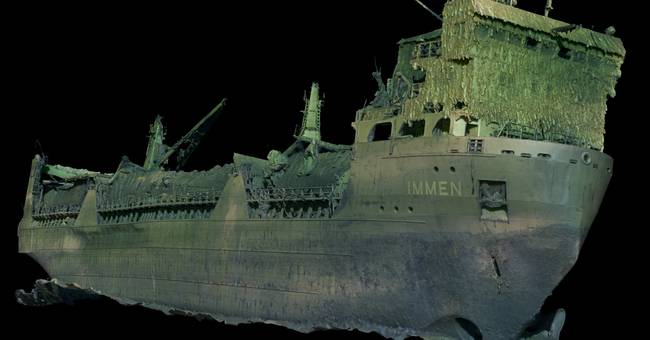By sending down a diving robot (ROV) that takes thousands of very high-resolution still images of the hull from the outside, you can then create an exact 3D model of the wreck.
- You can see every hole in the wreck, every mussel, down to the millimeter level.
It is an extremely detailed documentation method, says entrepreneur Ingemar Lundgren who uses the new technology.
New precision
A 3D model of the wreck leaves very little to the imagination, says Lundgren, who is also an experienced technical diver and conducts this type of research on behalf of, among others, the Swedish Maritime and Water Administration.
- We examine every square meter of the wreck so that nothing is missed.
It is possible to measure damage and holes with great precision, he says.
3D scanning of wrecks is a method that has been possible for only a few years.
- In the past, divers or underwater robots have traditionally been used who have tried video films.
Immen
Lundgren tells of an investigation he made of an environmentally hazardous wreck (Immen) that sank in 1977 north of Gotska Sandön.
There were theories that a submarine collision caused holes in the hull of the Immen.
But those theories could be dismissed after the investigation, he says.
The thickness of the hull and corrosion are measured, among other things.
- With this technology you get a uniform image.
It's almost like salvaging the wreck, even though we do it digitally.
We remove the water and get a crystal clear picture that shows every little detail on the wreck.
Government and relatives
He says that a prerequisite is of course that the government gives the go-ahead and the relatives say ok.
- This is a survey that is done externally.
We do not go into cabins and film remains.
The risk of finding the deceased is very small.
I have examined many wrecks where there are dead, but I have never found any dead in this type of investigation.
More can dive deep
He also says that the circle of divers who can dive at these depths has become significantly larger since Estonia sank in 1994.
- We were probably only a handful of divers who could do it then.
But today I would say that it is over a hundred in Sweden and a couple of hundred in Scandinavia.
Technology has advanced so that you can make longer bottom times.

